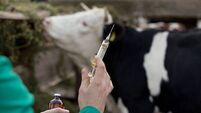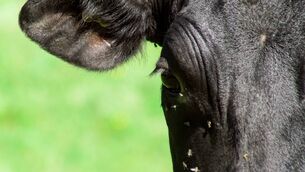The huge significance of how the CAP is changing may only sink in for some farmers in the spring of 2023 when they fill out the annual application for direct payments.
It is by far the most important annual form-filling for farmers. In recent years, it has been worth about €1.2 billion to them - made up annually of the basic farm payment at around €800 million, plus the Greening payment, for which most Irish farmers automatically qualify, because they are pasture-based.
However, in 2023, the Basic Income Support for Sustainability (BISS) becomes the main direct payment to farmers, and it will total only about €693.4 million, according to Ireland’s CAP Strategic Plan 2023-202,7 which is currently with the EU Commission for approval.
In line with the EU’s CAP changes, the Strategic Plan proposes that huge proportions of the direct payments farmers were familiar with will be hived off into the Eco-Scheme, Complementary Redistributive Income Support for Sustainability, and Young Farmers Scheme.
Applying for these will add hugely to farmers’ paperwork in the spring of 2023. However, applying for the ANC (Areas of Natural Constraint) payments won’t change much, and they will be worth about the same as in previous years to farmers, at about €250m per year.
Still, the paperwork will be challenging in 2023. And that should not be underestimated, bearing in mind that more than 100 farmers were bamboozled enough in 2021 to forget to tick the box saying they wanted to apply for ANC. They are now at the mercy of an appeals system to which they have applied to try to get their ANC payments.
Small to medium-sized farmers will especially be on tenterhooks in 2023 as they fill out their forms, because they depend so heavily on qualifying for the Direct Payments.
Teagasc has calculated that, in the absence of off-farm employment opportunities, some 63% of farm households and over 80% of small farms are economically vulnerable. Without direct support, they may not be viable.
That is why the CAP Strategic Plan proposes to redistribute direct payments from larger to smaller and medium-sized holdings, by way of the Complementary Redistributive Income Support for Sustainability (CRISS).
CRISS will be worth a predicted annual €118m, or 10% of the direct payments ceiling for the 2023-2027 period. It will average about €43 per hectare for nearly 70,000 farms of less than 30 hectares, and for the first 30 hectares of a further 55,000 larger farms.
Three out of every four Irish farmers are expected to benefit financially from the proposed CRISS.
But the biggest diversion in 2023 of the direct payments farmers are accustomed will go to an Eco-Scheme that will reward farmers for undertaking actions beneficial to the climate, biodiversity, water quality and the environment.
The eco-scheme budget has been ring-fenced at 25% of Ireland’s Direct Payments allocation, so the annual application for it will be extremely important for farmers.
They can opt-in or out annually, but so much money is involved that most farmers will probably apply and endeavour to undertake the agricultural practices that will deliver environmental benefits and qualify them for eco-scheme payments. In fact, some farmers need only continue their existing practices (such as low stocking rate) to qualify.
Farmers wishing to receive an Eco-Scheme payment must undertake at least two out of eight proposed agricultural practices:
DAFM says their proposed Eco-Scheme is designed to be relatively straightforward to operate for both them and for farmers. Farmers will fervently hope the Eco-Scheme is straightforward as promised, because there is nearly €300m at stake annually for them.
Ironically, the more farmers that stay out of the Eco-Scheme, the more the farmers in it will be paid. DAFM has calculated that if all eligible farmers (about 129,000) partake, the average payment per hectare could be €66. If only 65,000 farmers partake, the average payment could be about €130. The average payment could be €77 per hectare if 85% of farmers partake.
The Complementary Income Support for Young Farmers (CISYF) will take 3% of the Direct Payments envelope in the proposed CAP strategic plan. It is designed to encourage and facilitate educated young farmers setting up for the first time as the head of an agricultural holding solely or jointly.
At nearly €36m per year, it will average €196 per eligible hectare in 2023, reducing each year to a rate of €161 in 2027, subject to a maximum of 50 hectares per eligible applicant.
It builds on the support available under the Young Farmers Scheme from 2015 to 2022, and will continue payments for the remaining period of eligibility under that scheme.
From 2023, the National Reserve will annually absorb €35m, a similar amount to the CISYF’s €35m.
Hopefully, all farmers will successfully negotiate the new onslaught of form filling in 2023. Even then, there could be surprises in store. They will have to wait and see how convergence treats them. It is a mandatory EU requirement that all payment entitlements will converge to a value of at least 85% of the planned average unit amount.
Farmers must also be in line with proposed new much more demanding conditionality attached to the BISS, principally the requirement that at least 4% of their lands must be non-productive, in order to boost biodiversity.
It’s all change in 2023, and very daunting for all farmers, with direct payments representing 70% of the average Family Farm Income in 2020, but even more so for cattle rearing farms, on which direct payments represent 151% of average income.












